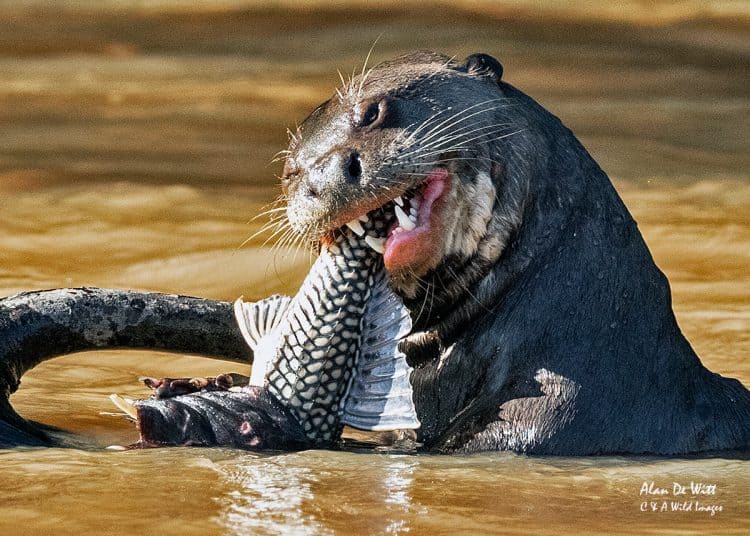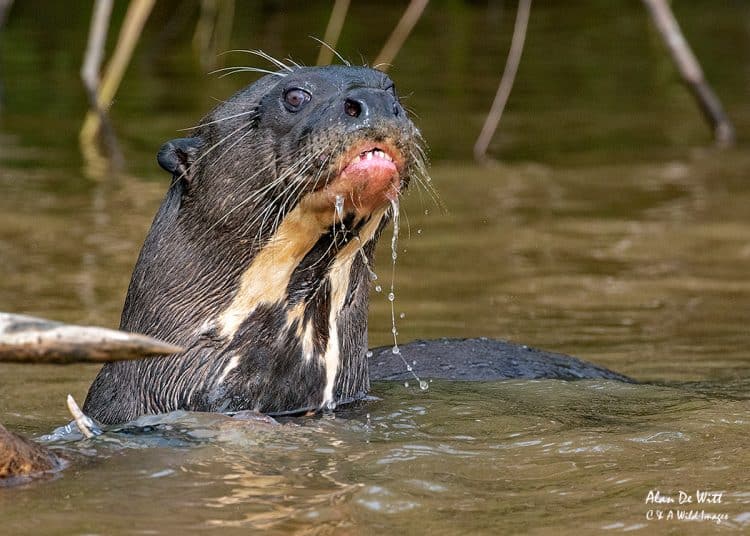By the 1970’s the number of Giant Otters found South America had fallen dramatically. Mainly due to a demand for their pelts, deforestation, and human disturbance. By the time we travelled in 2008 to the Peruvian Amazonian rain forest, they had become an endangered species. On that occasion we travelled by canoe up the Las Piedras River. To the Amazon Rainforest Conservation Centre (ARCC) in the heart of the Jungle. Where we were hoping to see a resident family of Otters. Although we encountered them on a number of occasions, getting close was challenging and unfortunately capturing good images proved very difficult.
So it was with some trepidation that this year we ventured to Brazil’s Pantanal in search of both Jaguars and the Giant Otter. Staying on the River Cuibia near the confluence of the Three Brothers River. It wasn’t long before we came across the first of four families that had made this area their home. Fortunately, far from being wary of humans these seemed to be happy to allow us to see and study them at close range. It was an excellent opportunity to find out more about these endangered animals and capture some great images.
The Giant River Otter (Pteronura Brasiliensis)
One of the rarest mammals in the Pantanal region. The Giant River Otter is also know locally as the River Wolf or Ariranha from the Tupí word meaning water jaguar. Is also one of South America’s top carnivores and the largest member of the weasel family.
More about images and details of our encounter with these endangered creatures on our post at https://adwimages.co.uk/giant-river-otter/



Alan De Witt
After spending a career that demanded much of my time and energy. I'm now retired and finally found some time to pursue an interest in wildlife and photography as well as putting together a website C & A's Wild Images.
I now live in Norfolk, an ideal location in the UK to see wildlife and over the years have also had the opportunity to visit and spend time using the camera in interesting and sometimes remote parts of the world. I first became interested in trying to capture wildlife images when I left university in the days of slide film. Initially I used two compact cameras with 20+ zooms but now have moved to a professional Canon SLR set-up.

Leave a Reply